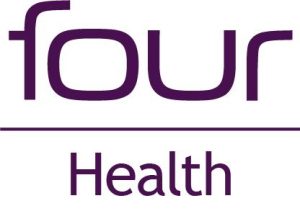The science of experience planning in pharma media
September 1, 2017 | Behavioural science, Experience planning, Pharma marketing, Pharma media
Our digital lead, Richard Springham, looks at how the principles of behavioural science and experience planning are used in best practice pharma media planning.

There have been reams of material written on behavioural science and how to use it in your marketing efforts. Some are great and achieve the very behavioural change with their readers that they are seeking to teach, some achieve the opposite. Experience planning is a popular phrase in today’s marketing lexicon. It focuses on how each interaction with a (potential) customer is an ‘experience’ and how to best plan this in your campaigns.
How can we use these principles to better plan the paid-for media in the pharma industry?
Every marketer will have the decision making and behavioural change funnel etched in their mind like a hieroglyphical badge of honour, and I am sure you can talk at length about the troves of information on the subject and their respective successes (or not). But to what extent is this being considered in your paid-for media planning?
Media planning is a critical part of any pharma omni-channel marketing plan, and the principles of behavioural change run true throughout. There are always other metrics and goals in play; however when it comes to experience planning within paid-for media why not consider a really simple method.
At the broadest level, customers engage with content on two levels – conscious and sub-conscious. Each perform a critical role in shifting perception and behaviours and, as such, both should be considered as part of an effective media plan.
The first pillar is the sub-conscious. These interactions are fast, intuitive and consistent. They display messaging to users in micro-bursts of pertinent information that may or may not be actively engaged with by the target audience. It is the noise, the constant, the brand awareness at play to breed familiarity. Knowing the brand and messaging but not entirely knowing where from.
This could be targeted digital display advertising, well-placed print media, or sponsorship of awards/events. In which the brand is ubiquitous with their target audience and brings a level of knowledge that recipients might not fully comprehend.
The media metric for this is attention. Not impressions, not clicks, not interactions; but, attention. We work with third party organisations to independently verify this metric in order that this crucial pillar of experience planning is properly understood.
The second pillar is the conscious. These interactions are slow, deliberate and in-depth. They present the opportunity for recipients to dive deeper in to the messaging and take a concerted step to learn more, educate themselves, and explore under the surface of the brand messaging. From here there is the potential to change behaviour. It gives the recipient the ability to learn and recount the information and as a result start to see a change in behaviour.
This could be targeted, user-initiated video advertising, eDetailing, bespoke emails and any other longer-form content to educate, engage and inform.
The media metric here is still attention, but in a different form. This is in-depth attention in which dwell time, scroll depth, scroll speed, and revisits all count towards success. Again, independent third party organisations can help measure success.
These pillars should never be seen as mutually exclusive but should work symbiotically to deliver a concordant experience for the customers, with the weighting between them informed by the brand positioning and purpose of the campaign.
Whilst many would say that the ultimate behavioural change is simply more scripts or recommendations, there is a long journey to take before this. And using these two simple pillars in your experience planning across paid-for media campaigns may help you lead your customers to this goal.
Four Health Media will be presenting the Multichannel award at the PM Society Digital Awards 2017 on 6th September. To discuss how to benefit from experience planning in your campaigns, email us or contact one of the team.
This content was provided by Four Health
Company Details
Latest Content from Four Health
Find your match in digital pharma marketing
Our Digital Lead, Richard Springham, looks at how to apply matchmaking lessons from Tinder to your own digital marketing.
Four Communications acquires Healthcare specialist MSA Media
Independent integrated communications agency, Four Communications Group has acquired 100 per cent of market-leading healthcare media planning & buying agency MSA Media.





